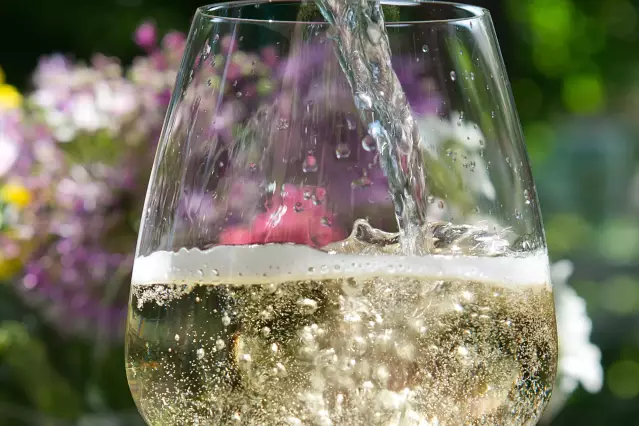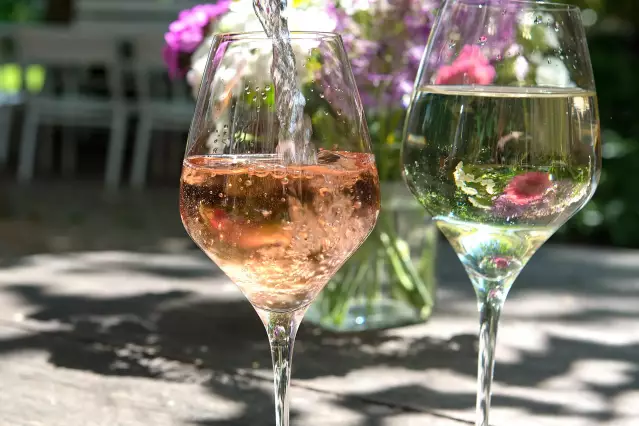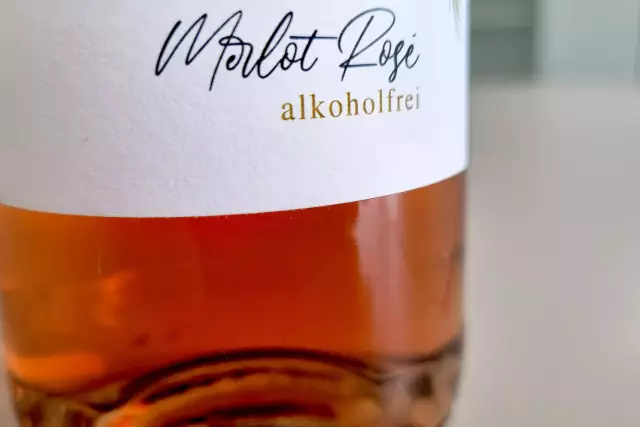Wine spritzers
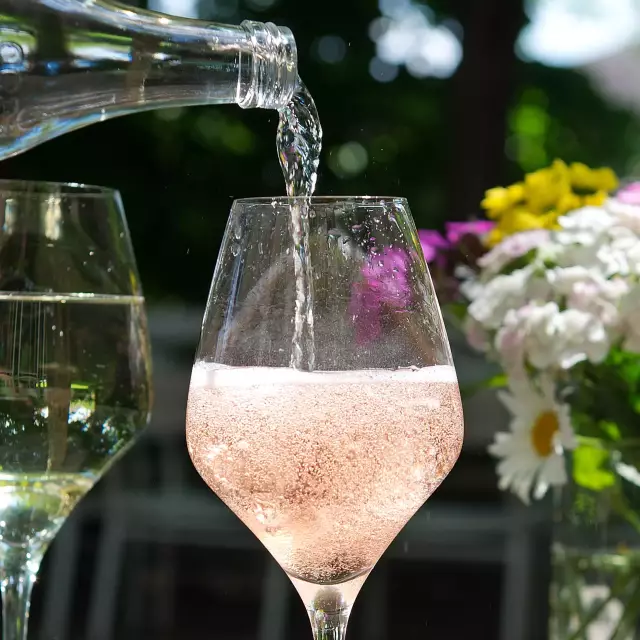
On a hot summer’s day, a well-chilled wine spritzer – consisting in roughly equal parts of fresh white wine and sparkling mineral water – is pure enjoyment.
Facts
-
1 : 1
is the mixing ratio usually
-
30 %
wine in a summer spritzer
The classic is a Riesling spritzer, because this grape variety contains a fresh, fruity acidity and aromas reminiscent of apples, peach and grapefruit. However, other grape varieties are excellently suited as well:
If you prefer a milder acidity, you might like to try using Müller-Thurgau or Silvaner as the wine component.
These days, rosé spritzer is becoming more and more fashionable. It’s a bit more expressive on the palate than a white spritzer and boasts a lovely summerly colour.
And, of course, red wine spritzers have their devotees as well. If you’re one of them, you should preferably use grape varieties that are low in tannins, such as Portugieser, Pinot Noir and Meunier (Schwarzriesling), since tannins and carbonic acid do not harmonize.
Combined with mineral water, the chosen wine makes for a fruity-fresh summer drink.
It's all in the mix
Traditionally, you mix wine and water in equal parts for a spritzer. The resulting drink has an alcohol content of 5-6 % vol. If you prefer a stronger drink, you might increase the wine ratio a little.
As a rule, you use dry wine for a spritzer, but that’s as much a matter of personal taste as it is with wine in general. Using semi-dry or even sweet wine simply results in a less tangy spritzer.
The water used for the spritzer should have as little of its own taste as possible, otherwise it might cover the wine’s aromas too much. As far as the carbonic acid content is concerned, we suggest medium to strongly sparkling mineral water. And if you have a really sweet tooth, you can try and prepare your wine spritzer with lemon soda rather than mineral water.
What does a Palatine understand by "Trollschobbe"?
The Palatine Trollschobbe is a spritzer made from wine and sparkling wine, i.e. much more substantial than the conventional spritzer made from wine and water.
Varietals

Light and fluffy: cashew coconut mousse with passion fruit Cashew coconut mousse with passion fruit
An airy cashew coconut mousse with passion fruit
- 400g Cashewkerne
- 400ml Haferdrink
- 6EL Agavendicksaft
- 6EL Kokosflocken
- 4 Passionsfrüchte
- 1 Prise Vanille
Place the cashews in a container and add enough water to cover the cashews sufficiently. Place the cashews in the fridge to soak overnight.
(With a high-performance blender, 3-4 hours is also sufficient.)
Drain the water and place the cashews in the blender with the oat milk, agave syrup and coconut flakes. Add the vanilla and blend until the mousse is creamy and no longer contains any chunks.
<p
<p>Divide the mousse between four glasses. Halve the passion fruit, scrape out the flesh with a teaspoon and place on top of the mousse. Decorate with coconut flakes.
- Pinot Blanc (süß & edelsüß)
- Riesling (süß & edelsüß)
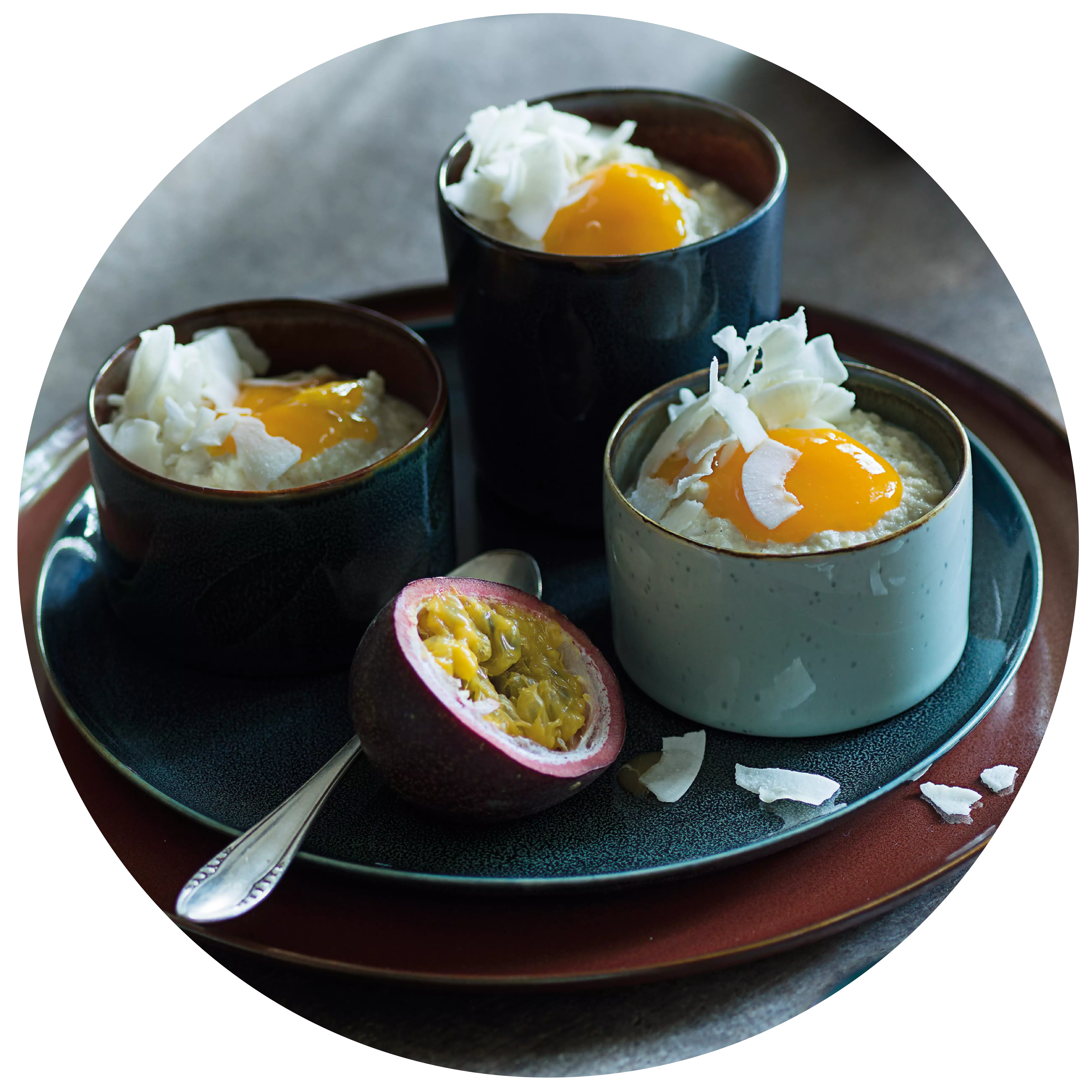
with pears, beans, parsley root and black walnuts Venison medallions
with pears, beans, parsley root and black walnuts
- 12 Stück Rehmedaillions (a 80g)
- 30 Gramm gebratene Speckstreifen
- 200 ml Bechamelsauce
- 3 EL Sonnenblumenöl
- 8 kleine Petersilienwurzeln mit Grün (alternativ Knollensellerie)
- 6 - 8 breite Schnippelbohnen
- 1 große Birne
- 4 - 6 schwarze Walnüsse
- 100 ml Wildfond
- 2 EL Butter
- 2 Stängel glatte Petersilie
- nach Geschmack Salz
Preheat the oven to 180 °C top and bottom heat. Clean, peel and trim the parsley roots. Clean the beans and cut into diagonal pieces. Blanch the parsley roots and beans separately in boiling salted water and rinse immediately in iced water.
Cut the walnuts into eighths and warm in the game stock. Wash the unpeeled pear, cut into eighths, remove the core and cut into thin slices. Fry the venison medallions on both sides in oil, then finish cooking in the oven for approx. 3 - 5 minutes.
In the meantime, toss the beans and parsley roots in melted butter and season with salt. Arrange the vegetables with the black walnuts and pear slices on large plates. Place the medallions on top, garnish with game stock, Béchamel sauce and bacon strips.
Tip: You can make your own black walnuts. To do this, prick the walnuts all over with a fork or skewer and place in water for 10 days. Change the water every day so that the tannic acid can drain off. Boil the nuts 3 times in salted water until they are deep black. Simmer with bay leaves and peppercorns for approx. 20 minutes until soft. Layer in preserving jars and cover with syrup. The nuts can be kept for approx. 1 year.
- Spätburgunder / Pinot Noir (trocken)
- Pinot Gris (trocken)
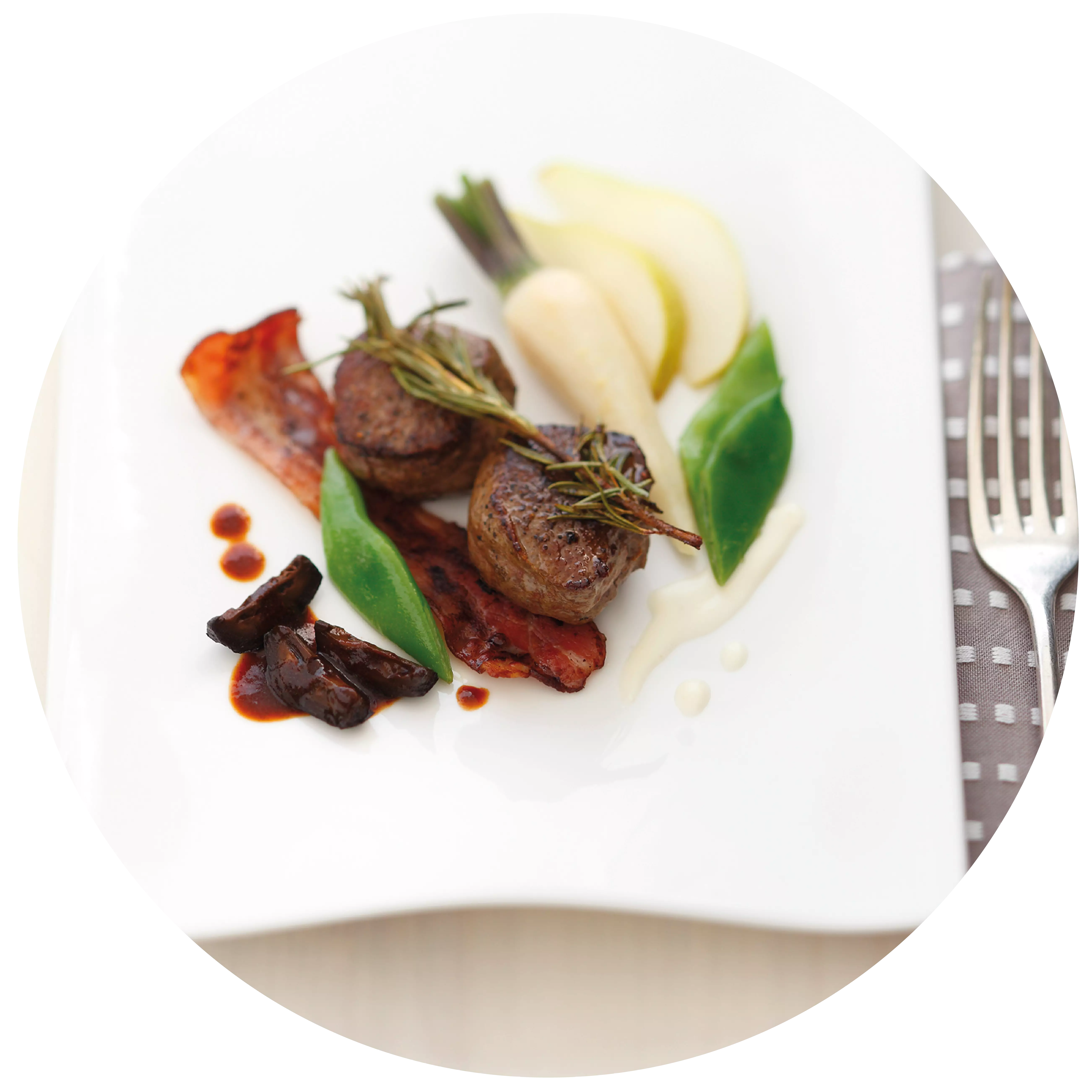
the "Frankfurt Green Sauce" Quiche with herbs
the "Frankfurt Green Sauce"
- 200 Gramm Mehl
- 100 Gramm Butter
- je 1 Bund Kräuter für Frankfurter Grüne Sauce (Petersilie, Kresse, Kerbel, Borretsch, Sauerampfer, Schnittlauch, Pimpernelle)
- 100 - 125 Gramm Schwarzwälder Schinken
- 7 ganze Eier
- 125 ml Sahne
- 100 Gramm Frischkäse
- 1 EL Zitronensaft
- nach Geschmack Salz & Pfeffer
Knead the flour and butter with 4 tbsp water and a teaspoon of salt to form a smooth dough. Line a mould with it and leave to cool for 30 minutes.</p
<p>Hard boil 4 eggs. Wash, drain and finely chop the herbs from the Frankfurt green sauce. Cut the ham into wafer-thin slices and spread on the pastry base. Chop the hard-boiled eggs into small
and spread over the top. Mix the 3 eggs, cream and fresh cheese and season with 1 tbsp lemon juice, salt and pepper, then fold in the herbs. Spread the mixture over the pastry base.
Bake at 180 °C (gas mark 4) on the middle shelf of the oven for about 30 minutes.
- Riesling (trocken)
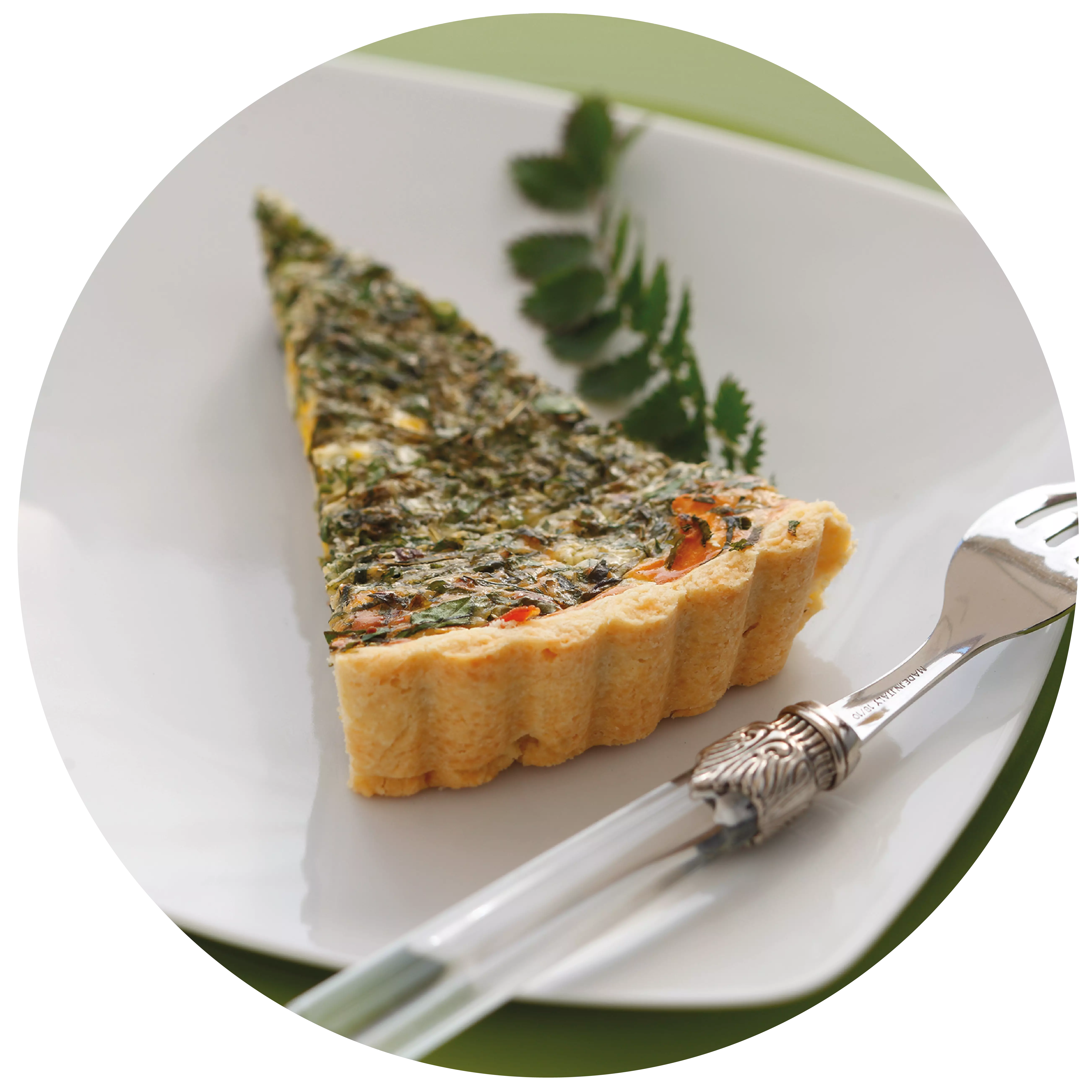
Stuffed, with paprika and pecorino Schnitzel rolls
Stuffed escalope rolls with paprika and pecorino
- Nach Belieben Pinienkerne, Basilikum, Knoblauch
- 8 Stück dünne Schweineschnitzel á ca. 75g & Holzspießchen
- 1 Glas rote geröstete Paprika
- 100 Gramm Pecorino-Käse
- Nach Bedarf Olivenöl, Salz, Pfeffer
Roast the pine nuts and leave to cool. Pluck the basil leaves and place in a blender with the finely chopped garlic, olive oil and pine nuts and blend gently. Finely grate the Parmesan and mix in. Season to taste with salt and pepper.
Wash the meat and pat dry. Drain the paprika in a sieve and finely grate the pecorino. Season the escalopes on both sides with salt and pepper and spread 1 tsp of pesto on each. Cover the escalopes with paprika, leaving approx. 3 cm free on one narrow side of each piece.
Spread the pecorino over the paprika. Roll up the meat from the coated side and pin in place with wooden skewers. Grill the escalope rolls on the barbecue for 20-25 minutes, turning if possible, and indirectly for the last 10 minutes.
- Spätburgunder / Pinot Noir (trocken)
- Lemberger (extra brut)
- Portugieser (trocken)
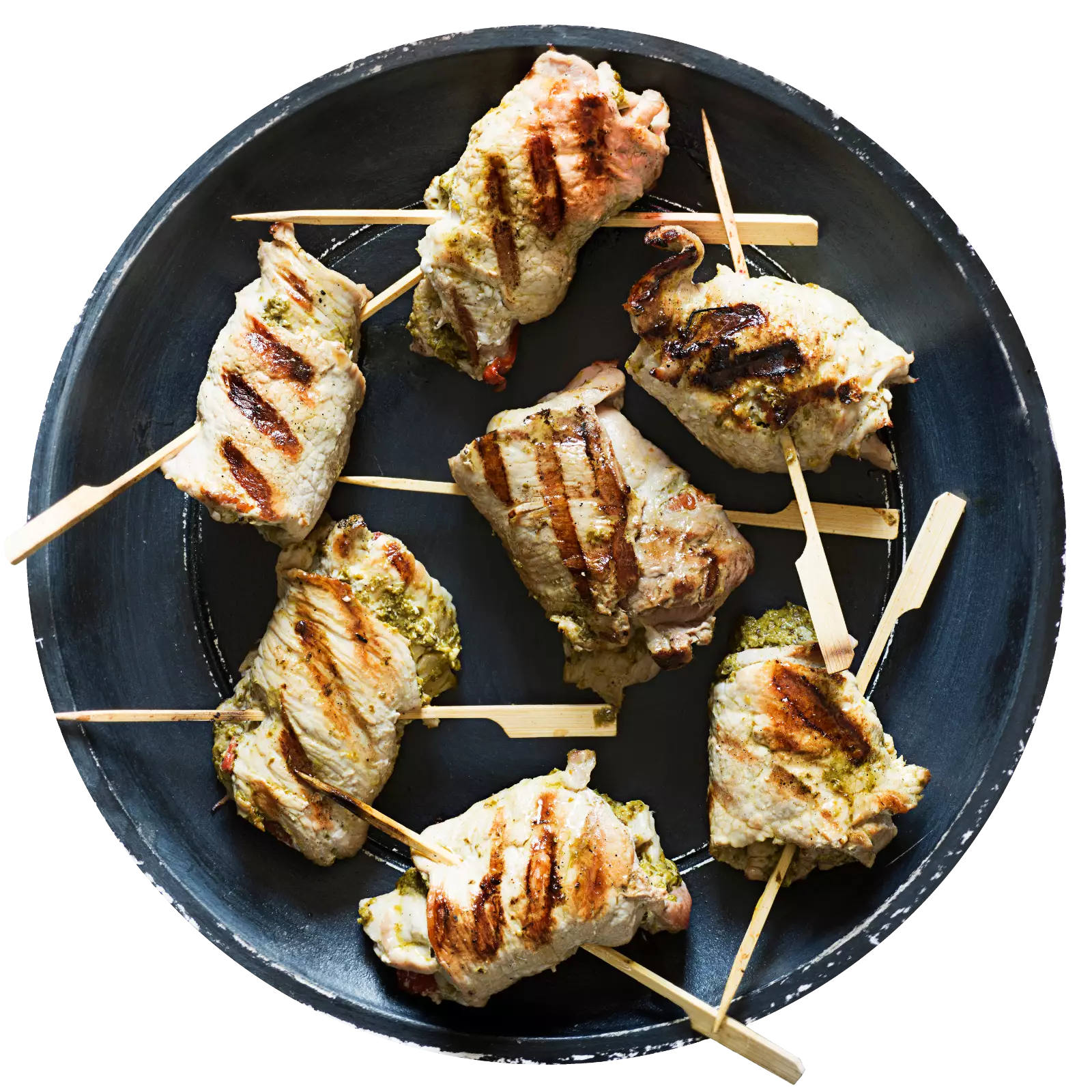
Teaser
Events
-
Show
winetasting in our winery - cheese & wine
Mainz-Hechtsheim


